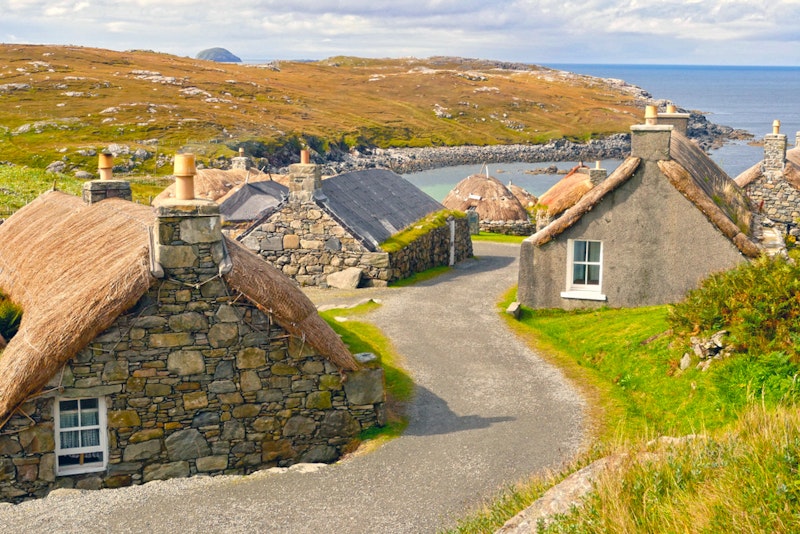Study Notes
GCSE Geography | UK Rural Population Change (UK Economic Futures 6)
- Level:
- GCSE
- Board:
- AQA, Edexcel, OCR, Eduqas
Last updated 6 Jan 2025
Many rural areas across the UK are experiencing population change, which brings significant social and economic changes, however, the impacts vary depending on whether these rural areas are facing population decline or population growth.
Population growth - South Cambridgeshire
South Cambridgeshire is a rural area in the east of England which has experienced population growth. The 2011 census showed that the area had a population of around 140,000, and the 2021 census showed that the population had grown to 162,000, further growth is expected with an estimated population of around 182,000 for the next census in 2031.
Population growth has occurred mainly due to migration. Some of this has been through counter-urbanisation where people move out of the city of Cambridge where property prices are very high - by moving out into the countryside local people can afford a much larger property, and excellent transport links in the region make commuting into Cambridge or down to London easy. South Cambridgeshire has seen large numbers of highly skilled and educated people move into the area, attracted to well-paid jobs at the University of Cambridge or the Cambridge Science Park, working in areas such as computer software development, biotechnology and pharmaceuticals.
Social impacts
Villages in this area have grown which has resulted in more house building, traffic and noise - this causes disruption to the existing community through the construction process (which can last over a decade for large developments) and increased congestion on local roads, which are often narrow country roads. Modern developments can also spoil the community feel, and are often built without consideration of the existing character of villages. Existing services may struggle to support the increase in population, such as schools and healthcare facilities, and young people may have to move out of the area to find affordable housing, leaving behind an ageing population. The proportion of people in South Cambridgeshire aged 65 or over is estimated to reach almost 30% by the 2031 census.
Cambourne (pictured below) is a new settlement which was approved in 1996 by South Cambs District Council to address the issue of population growth in the area. Construction began in 1998, and a year later the first residents moved in. The development had planning permission for up to 3300 dwellings - and in 2020 construction of the final phase began, meaning that those living in the area have faced disruption for more than two decades.
Economic impacts
Population increase puts an increase demand on housing, therefore house prices rise - this might be good for those who are looking to sell their homes, but is bad news for those trying to get onto the property ladder. Local businesses may see a boost in trade from new customers, however some places may end up becoming dormitory villages as people commute to work leaving the village empty during the day - which has a negative impact on businesses as commuters tend to use the services close to where they work rather than where they live.

Rural depopulation - the Outer Hebrides
The Outer Hebrides is a group of 65 islands off the west coast of Scotland which have experienced depopulation (population decline) as people have moved away. 46,000 people lived on the islands in 1901, but the current population has dropped to below 27,000. Most people live on the Isle of Lewis. This decline is mainly due to outward migration. With limited opportunities, younger people have chosen to move away from the area in search of better-paid employment elsewhere.
Social impacts
When working age people move away it leaves an ageing population with very few people to care for the elderly, which could lead to a crisis in adult social care in the area in the future, particularly as the remoteness of the area means that it is difficult for carers to travel to the homes of older people to provide support. There are not enough people to support local services so they may have to close, e.g. primary schools (which often only have a handful of students), health care facilities and bus services. In addition, there is not enough demand to improve existing infrastructure or services, which leads to further population decline.
Economic impacts
Businesses such as post offices have to shut when they don’t have enough customers, and new businesses are unlikely to locate to the area due to the lack of customers, and also the lack of important things such as high-speed internet coverage, which is often not available due to the cost of providing the infrastructure compared to the number of people who will use it.
There has also been a huge decline in farming and fishing. Most farming is sheep farming on crofts, which are tiny farms that can only offer very part-time work; and registered fishing boats have declined from over 900 in 1950, to just a few today which catch prawns and lobsters. Deep-sea fishing used to provide work to local fishermen but this has been taken over by larger foreign-owned vessels.
The beautiful scenery of the Outer Hebrides means that more and more tourists are choosing to visit the islands, however the remoteness, along with its limited infrastructure, means that tourism will never grow to the extent that it will become a reliable source of income.

You might also like

Thriving and declining cities from globalisation
13th November 2018
Tri-Dominoes - Urbanisation (Paper 2) | Revision Activity
Teaching Activities
Tri-Dominoes - UK Economy (Paper 2) | Revision Activity
Teaching Activities
‘Clear the Deck’ Interactive Revision Quiz for Paper 2: UK Economy
Quizzes & Activities
Daily Email Updates
Subscribe to our daily digest and get the day’s content delivered fresh to your inbox every morning at 7am.
Signup for emails